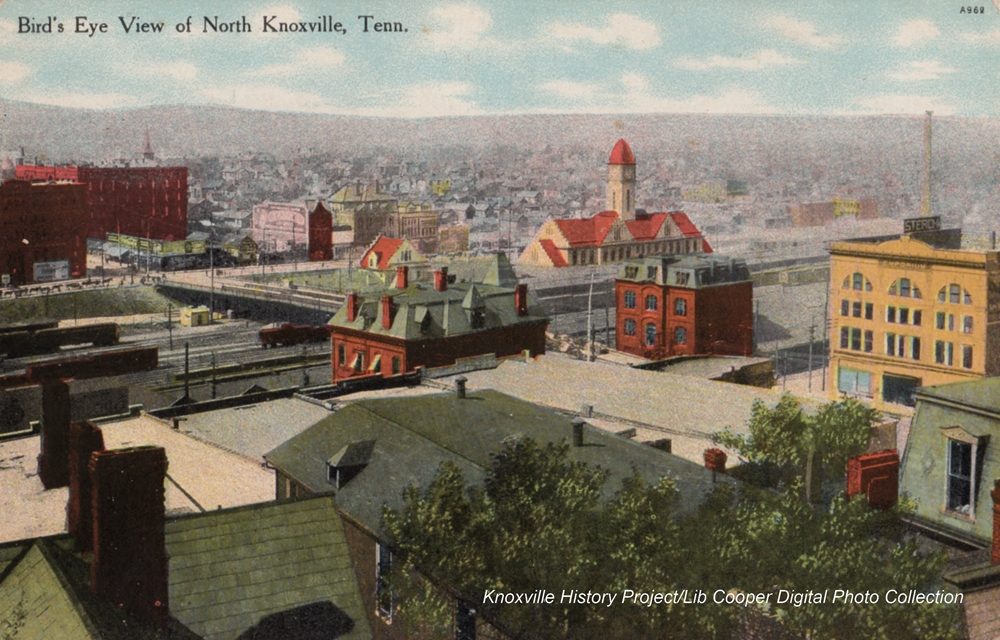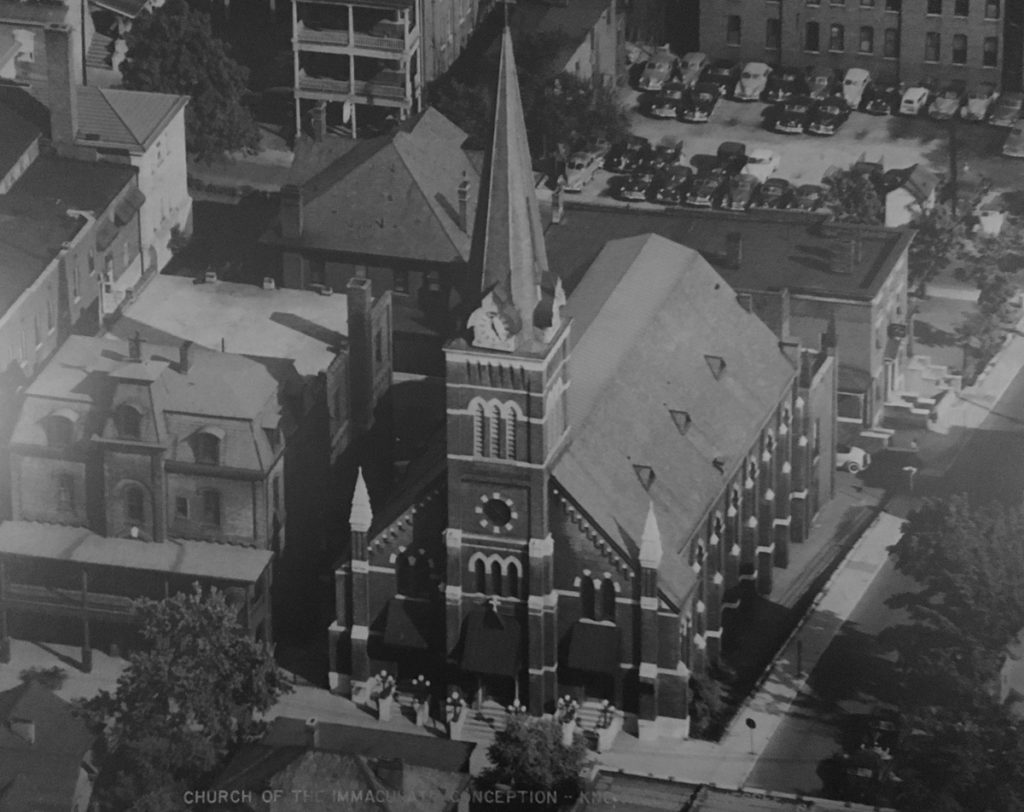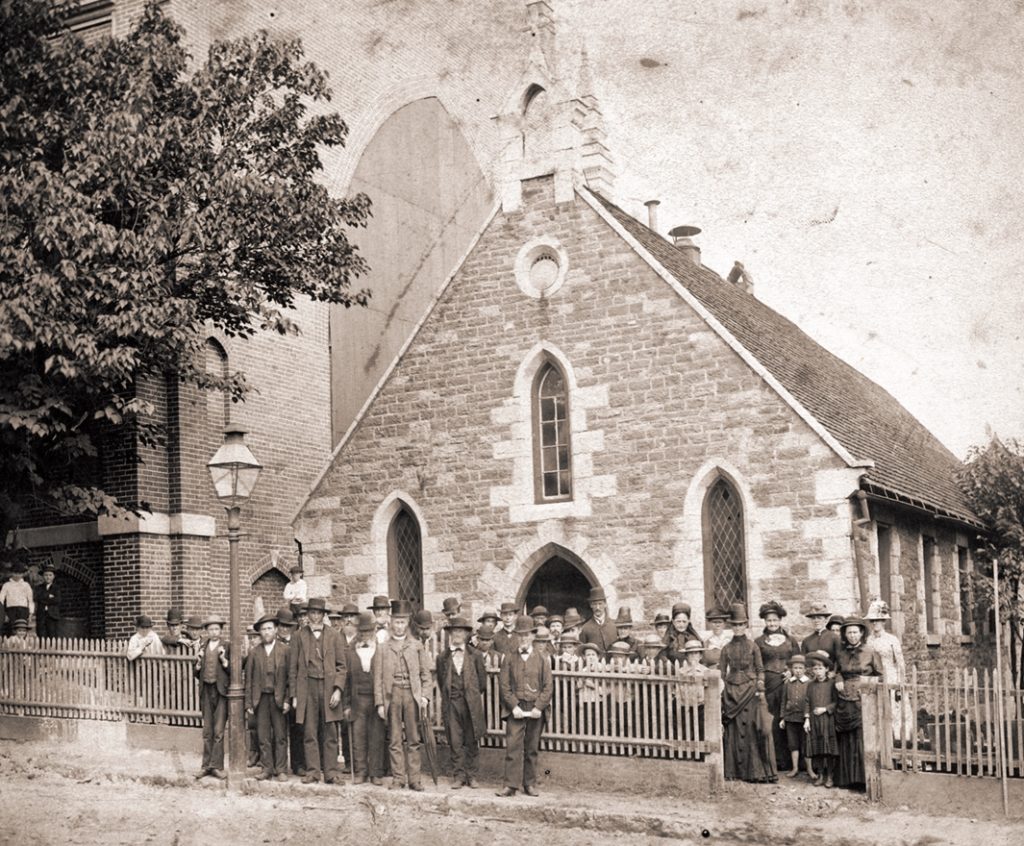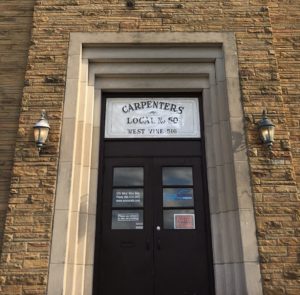Gallows Hill
Up on the highest point of downtown, at the northern end of Walnut Avenue, is the area once known as Gallows Hill. It’s a name resurrected by the Knoxville History Project both for its location and newsletter. This site has an enigmatic place in Knoxville history as Jack Neely talks about in the following episode of Knoxville Chronicles by Knoxville Weekend:
https://www.knoxvilleweekend.com/knoxville-chronicles-gallows-hill/
In 1935, the Knoxville News-Sentinel columnist, Lucy Templeton, then looking back at a quarter-century-old Sentinel newspaper from 1910, commented on the arrival of the first train in Knoxville on July 4, 1855. That arrival was remembered in 1910 by a Mr. William G. Stringfield who was a Knoxville resident in those days. Stringfield remarked, “There were few buildings in that part of town where the depot is located. The hillsides for a mile or more below were lined with an anxious and excited and enthusiastic populace. Gay Street then, and a short time previous, had its northern terminus at or near “Gallows Hill,” or “Summit Hill” of later days.”

Looking towards the Southern Railway Station from Gallows Hill in an early 20th century Knoxville Postcard. Lib Cooper Knoxville Digital Postcard Collection.
More interesting than the train’s arrival, Templeton was startled to discover the name Gallows Hill. For her, the area referenced a once desirable section of town from where the Lawson McGhee Library stood at 128 South Gay Street at the intersection of West Vine Street, up to the hill’s highest point at the imposing Immaculate Conception Catholic Church.
An imposing Gothic-style structure, the Immaculate Conception Catholic Church was designed by Knoxville architect Joseph Baumann and constructed during the 1880s to replace the much smaller original church sanctuary, built in 1855, the same year that that inaugural train rolled into town.
Knoxville’s Catholic congregation blossomed during the 1850s following an influx of Irish Catholics attracted by the expansion of regional railroads. The former immigrant neighborhood, Irish Town, was settled north of Jackson Avenue and the rail line, and is the reason why the church front points that way. It points to the heart of its former parish.

1951 Aerial of Gallows Hill showing the old Catholic School to the left of the church. Courtesy Immaculate Conception Catholic Church.
In 1886, the City of Knoxville voted to place a clock tower in the church steeple. For more than a century, the accuracy of the four-sided clock relied solely on manpower – ascending the steep staircase to the tower and manually hand-cranking the mechanism. For fifty years, the City contracted out the service – in 1924 paying Hope Brothers, local jewelers, the tidy sum of $50.00 per month. From the 1930s, the church took on the task itself while the clock was ultimately modernized for the digital age in 2005 during the church’s 150th anniversary.

The old Catholic Church in 1886 prior to it being torn down. The corner of the new, much larger church, just then completed, can be seen to the left.
However, when this hillside was actually used as a site for hanging remains a mystery, buried deep in Knoxville’s past. What little we do know dates back 150 years to June 6, 1868 when workmen digging in wet dirt to take out some of the steepness in the grade surrounding the old church found the skeleton of a male dead some 40 years or more.
An observer in the assembled crowd, an elderly gentlemen, remarked that he recalled from his own past that there was once indeed a gallows here when this spot was outside the city limits. He also told of a strange Frankenstein-esque tale involving a hangman’s victim cut down on this spot and transported down the hill to Second Presbyterian Church (where now the Arnstein Building sits on the corner of Market Street and Union Avenue) where the fresh corpse was reanimated in a ghoulish experiment by a Dr. Stephen Foster for a few flickering seconds.
You can read accounts of this story in Jack Neely’s “Knoxville: This obscure Prismatic City” and also in “A Haunted History of Knoxville” by Laura Still in KHP’s online store.
As of writing, the Knoxville History Project’s office is located on Gallows Hill, rather fittingly in the historic Carpenters’ Union Building. Built in 1946 as a Union Hall, the two-story pink building is used for offices, but up the attractive wooden staircase the dance hall on the second floor still remains largely as it once was, complete with the original stage and curved ceiling.
For a look inside the building, check out InsideofKnoxville’s blogpost from October 2017 or stop by one day and say hello to the staff at KHP!
Learn more about Knoxville in the KHP Archive via our Current Projects page.







